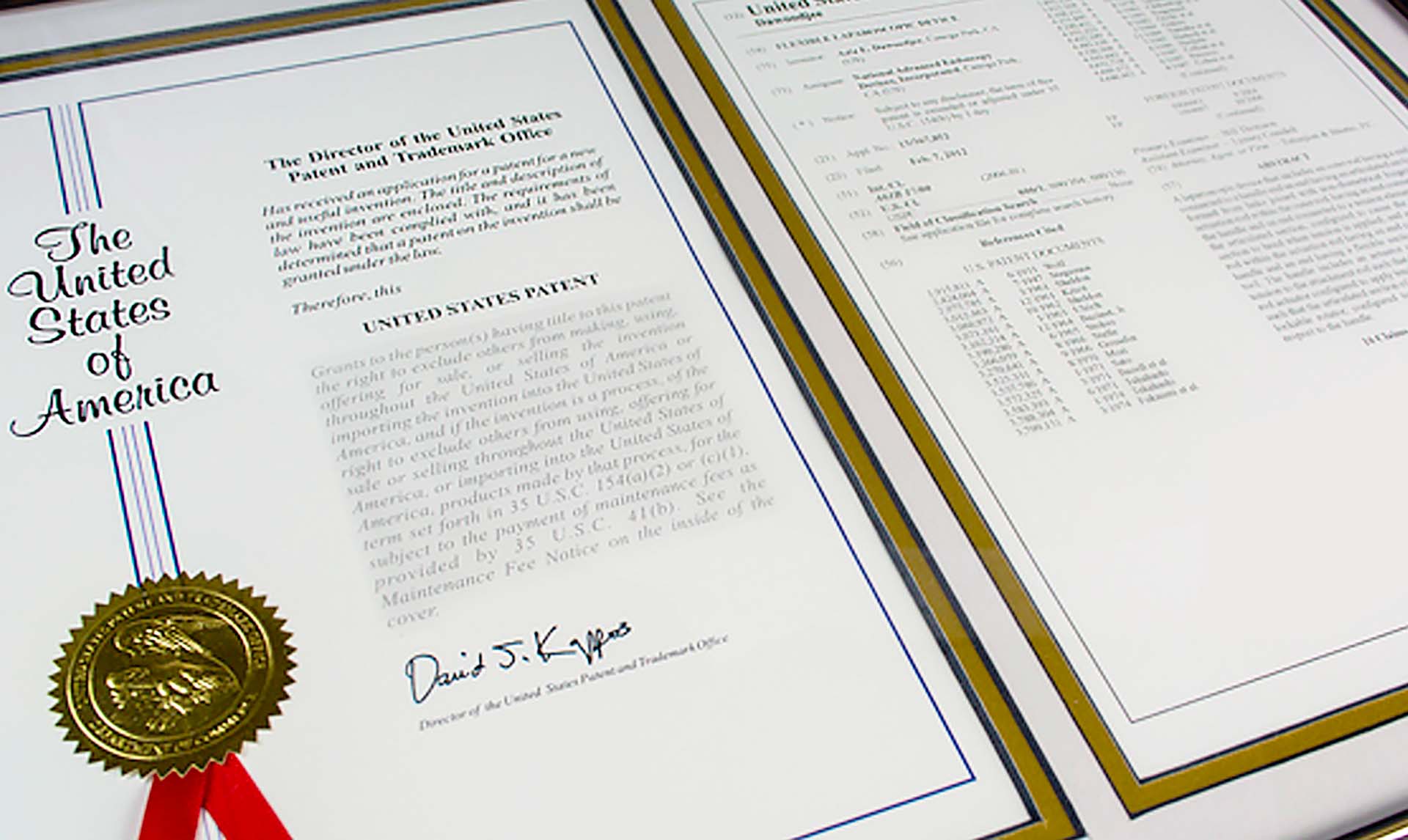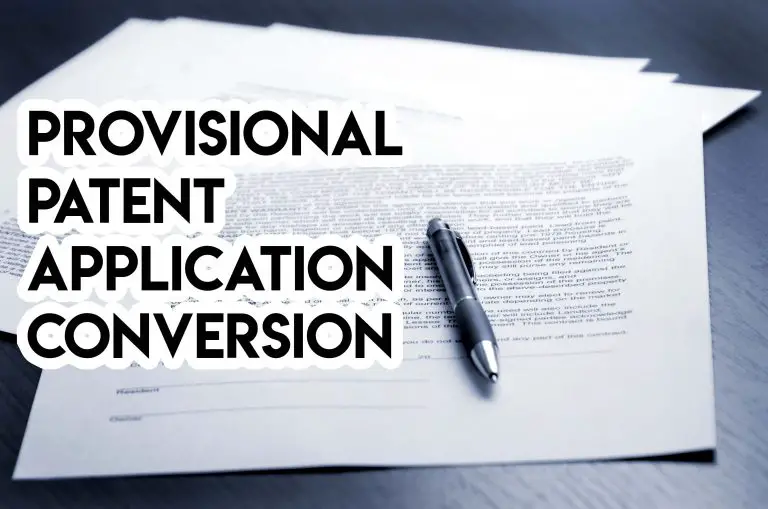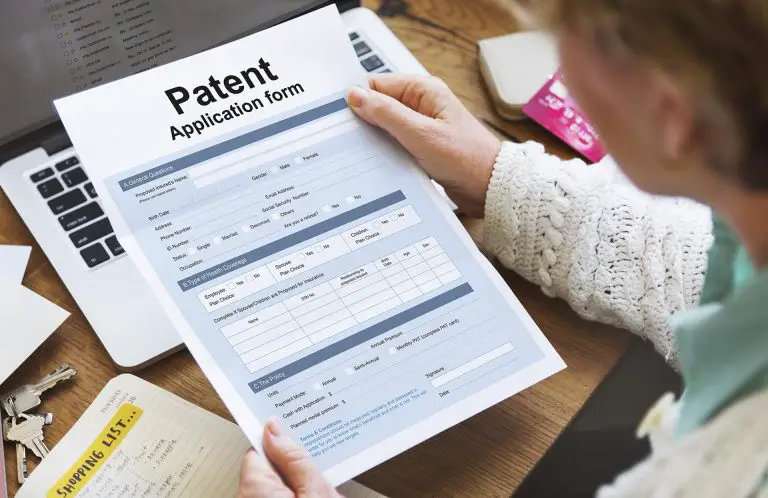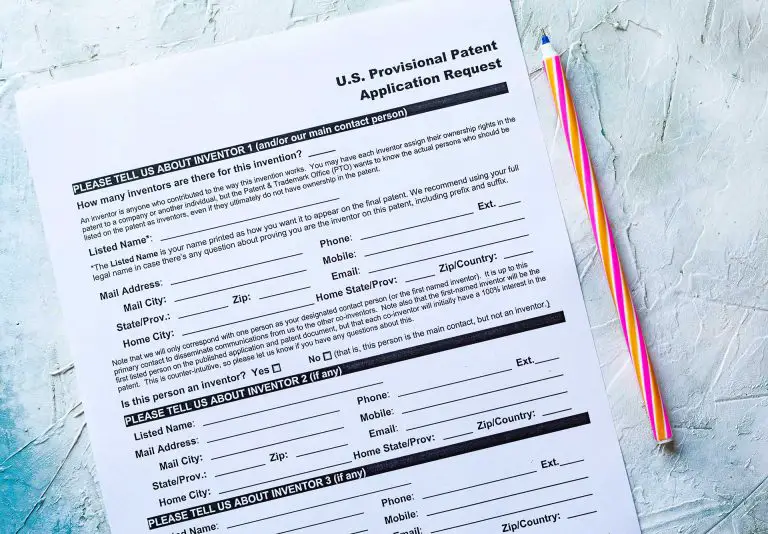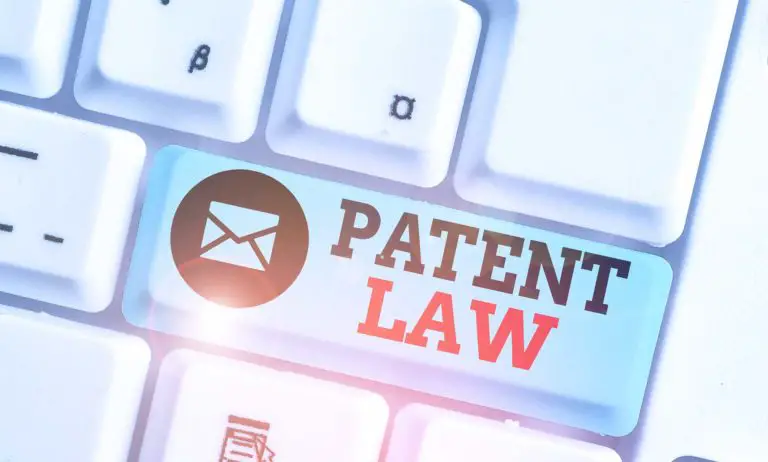Patent Certificate (All You Need to Know)
Patent Certificate
If you have been granted a patent, you might be wondering what is a patent certificate, as well as when you will get your patent certificate. We will explain in much detail below what a patent certificate is and how long it will take to get one, and how to get a patent certificate if your patent application has been approved by the USPTO.
What is a Patent Certificate?
A patent certificate is a certified certificate that presents a copy of an approved patent application as granted by the United State Patent and Trademark Office (USPTO). The main benefit of having a patent certificate is that it serves as proof that you have successful patented your application, and can therefore stop others from using, making, selling, and importing the patented invention to the United States for a limited period of time. For utility patents, an inventor can stop others from using or making his invention for twenty years from the filing date of a patent application. For design patents, an inventor can stop others from using or making his patented design for 15 years from the grant date of the patent application.
How to Order a Certified Copy of Your Patent Certificate?
Follow the following steps to order a certified copy of your patent certificate:
- Create an account or log in to an existing account on USPTO.gov
- Access your PAIR account to order a certified copy of your patent certificate
- Click on Order Patent Certificate
- Pay the $25 USPTO fee to obtain a copy of your patent certificate
- Wait for the certificate to arrive (Patent certificates ship via standard USPS mail)
Where is my Patent Certificate?
Inventors often ask use where is my patent certificate? The answer to this question depends on whether an inventor filed his own patent application or hired an attorney to assist him with patent his invention. Usually, patent certificates are mailed to the attorney designed as the attorney of record, meaning that the certificate is mailed to your attorney, and ideally your attorney should forward the certificate to you. If you prepared and filed your own patent application, the patent certificate should be mailed to the IP owner listed on the patent application. Also, if you work for a company and have assigned the invention to your company or employer, the patent certificate will be sent to the assignee on record with the USPTO.
How Do Inventors Patent Their Inventions?
Inventors patent their inventions by preparing and file either a utility patent application or a design patent application with the USPTO. After an inventor files his patent application, a patent examiner is assigned to examine whether the invention qualifies for either a utility patent or a design patent. If the patent application is complete and has no errors, the examiner will proceed to grant or approve the patent application.
However, if the patent application is missing some information or the invention described does not qualify for a patent, the examiner will reject the patent application, offering an inventor the opportunity to remedy any issues with the application. This process occurs until the patent examiner decides that the patent requirements are met. At this point, he will grant the patent application. Once your patent application is granted by the USPTO, you will need to pay a fee to the USPTO knows as an issuance fee.
Once the issuance fee is paid, your patent certificate will be mailed to you on the issuance date of the patent. In the event that you hired a patent attorney or a patent agent to represent you, you do not have to worry as the intellectual property (IP) owner designated on the patent application will receive the patent certificate. If for any reason, you need more copies of your patent certificate, all you need to do is order additional copies of it from the USPTO by paying a $25 for each additional certificate that you order.
Why Should You Patent Your Invention?
Inventors often patent their inventions and seek obtaining a patent certificate because it allows them to stop others from copying their invention, and selling is as their own. Once an inventor receives a patent grant, he can stop others from using, making, selling, and importing the patented invention for a limited period of time (20 years for utility patents & 15 years for design patents).
If anyone else uses, makes, sells, or imports and inventors patented invention without his express consent, the patent holder can ask the individual to immediately cease and desist the infringing activities. If the other party does not stop and continues to use, make, or sell the patent holder’s invention, the patent holder can sue that party for patent infringement in federal court. If successful, the court will order the infringer to immediate cease the infringing use.
That said, the USPTO is not responsible from stopping others from using or selling a patent holder’s invention. The patent holder must police and ensure that no one is infringing upon or using his invention without his permission. Also, obtaining a patent certificate over an invention allows an inventor to go out, make and sell his patented invention without having to worry about others copying his invention.
Also, having a patent, makes it easier for an inventor to license the use of his patent to others, who can make and sell the patented invention in exchange for paying the patent holder an agreed-upon fee or royalty. So, patents are an important form of intellectual property protection that inventors want and should obtain for their inventions, especially if they want to exploit their inventions and profit from their hard work.
Patent Rebel Frequently Asked Questions
1) How do I get a patent certificate?
To get a patent certificate, an inventor must have had his patent application approved by the USPTO. Once a patent application is approved and issuance fee is paid, an inventor will then be able to get a patent certificate that serves as proof of the patent holder’s patented invention.
2) What are the three types of patents?
Inventors can obtain three types of patents at the USPTO: utility patents, design patents, and plant patents. Utility patents protect the functional aspects of an invention, such as how an invention works and how it is used. Design patents protect the aesthetics of an invention, such as how an invention looks or appears. Plant patents protect new, asexually reproduced plant species.
3) What is a ribbon copy of a patent?
A ribbon copy is a certified copy of a patent certificate. It is known as a ribbon copy because the USPTO ribbon and seal appear on the patent certificate, along with a signature of the individual certifying the certificate.

